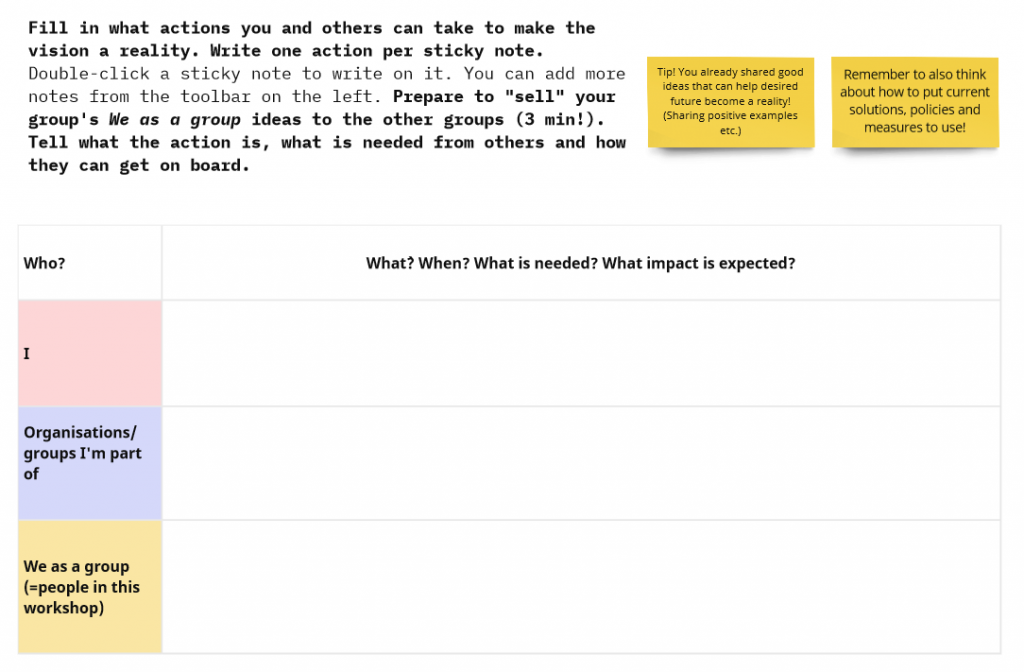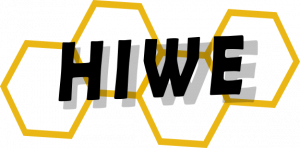From Me to We: Effective Faciliation in Multistakeholder Processes
In this series of posts, we share our insights on how to facilitate multistakeholder collaboration – in particular collaboration related to enhancing highly skilled internationals’ position in the Finnish labour market. The first post looked at preparing a multistakeholder collaboration. This post digs into what to consider during such a co-creation process.
The insights are based on our recent experience of planning and organising three co-creation processes tackling the issues of recruitment of highly skilled internationals, impactful employment and entrepreneurship services, and inclusive workplaces.
The fun begins!
Planning a worthwhile process and recruiting people to join it takes time and effort. After a multistakeholder collaboration has been prepared, you should know who the stakeholders involved in the process are. You should also understand what value the process can bring both to them and the ones initiating the process.
The fun part begins once any collaboration really kicks off. Be it a workshop, seminar, meeting, or other type of event, the moment where the participants get to meet each other for the first time is always exciting.
Before the stakeholders come together for the first time, you should know who is/are facilitating the process. That is, an individual or a group has been selected to guide the stakeholder through a process and to make the process possible and easier for them.
Facilitate equal participation
If the goal of a multistakeholder co-creation process is to tackle challenges related to highly skilled international’s position in the Finnish labour market and society, different stakeholders are bound to have power imbalances between them. Minimising negative effects starts with acknowledging that power might affect collaboration.
Facilitation is needed to make it easier for the participants to be able to contribute to the process – no matter what their position is vis-à-vis the topic of the co-creation process. Open dialogue, active listening, and respect for diverse perspectives help with building inclusive processes. Encouraging people to share their experiences and to empathise with others also helps.
Different facilitation tools and methods can also be applied. In general, using different types of activities and modes of engagement helps. If for example a workshop interaction relies mostly on listening and speaking, some participants can start to dominate the conversation and others become passive listeners. Exercises where participants write, draw, use their bodies, or use visual materials – amongst others – bring more opportunities to contribute in different ways.
Simple methods such as the Me-We-Us framework help too. You can structure activities during a workshop so that first participants engage with a task alone, then in small groups, and finally the whole group comes together. This gives everyone time to think and share ideas.
If the relevant stakeholders include people from different backgrounds, language choices often need to be considered. The language spoken needs to be such that it enables all relevant stakeholders to participate. No matter what language is chosen for interaction, it is good to encourage everyone to use everyday language and avoid specialist language. After all, even if everyone speaks the same language, they still might not understand a certain stakeholder’s field specific jargon!
Ensure continued engagement
Multistakeholder co-creation processes often need more than a single, short meeting to be able to reach its goals. It simply takes time for people to get to know each other and build trust – let alone to be able to solve challenges together. However, keeping participants engaged with a process is a challenge.
Using exercises that make participants feel they are producing results and moving along in the process helps. That is, the activities used during workshops or other meetings should be concrete enough and really activate the participants.
Whilst a well-planned process helps to keep people interested, a rigid process does not. It might be that the group is taking more time negotiating a common understanding, or they might want to take the process to a different direction. This is why once the process starts, the plan should be kept flexible enough to allow for changes.
It is good to have facilitators to ease the participants through a process, but participants also make the process move forward and initiate necessary changes to it. In fact, it is good to encourage the participants to take ownership of the process.
Share a sense ownership of the outcomes
Participants might expect the initiators of the collaboration to take charge of the outcomes of the co-creation. Sometimes the initiator is indeed the right actor to make sure that any results of the process are put into practice.
However, multistakeholder co-creation often deals with challenges that are too complex to be solved by a single actor. This is why it is important to build a sense that everyone taking part in the collaboration is in some form able to contribute to putting the outcomes into action and shares the responsibility for doing so.

This can be done for example through including exercises where participants are encouraged to think about a) what they can do as individuals, b) what they can do as part of different organisations or groups, and c) what the participants of the process can do together. This helps make the actions needed to realise outcomes more personal.
In the next blog post, we’ll share our insights on what to consider after a multistakeholder process.
Author: Piritta Parkkari, University of Eastern Finland
